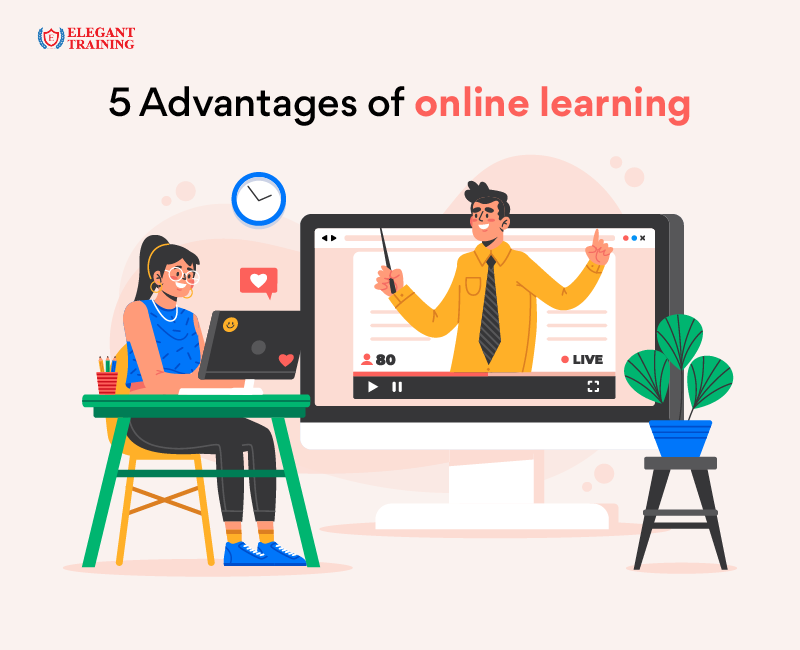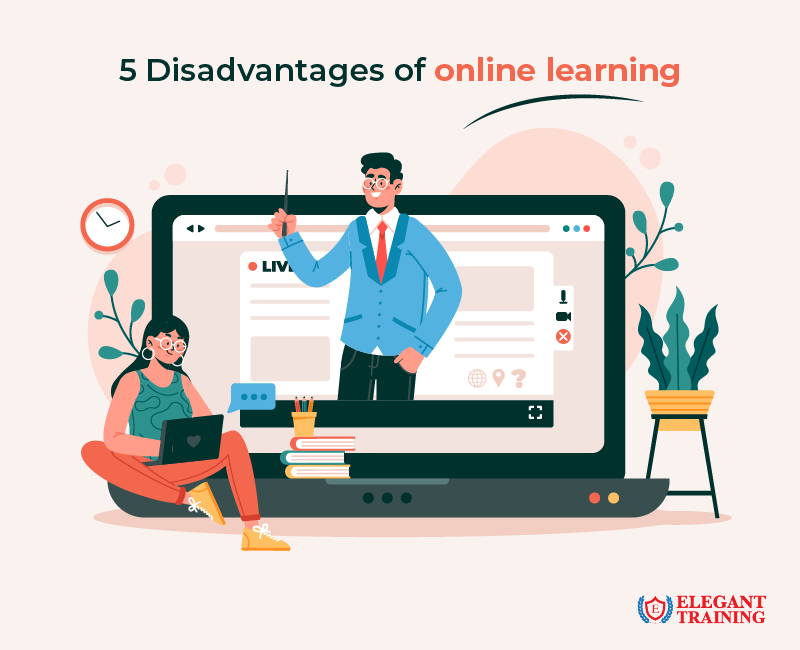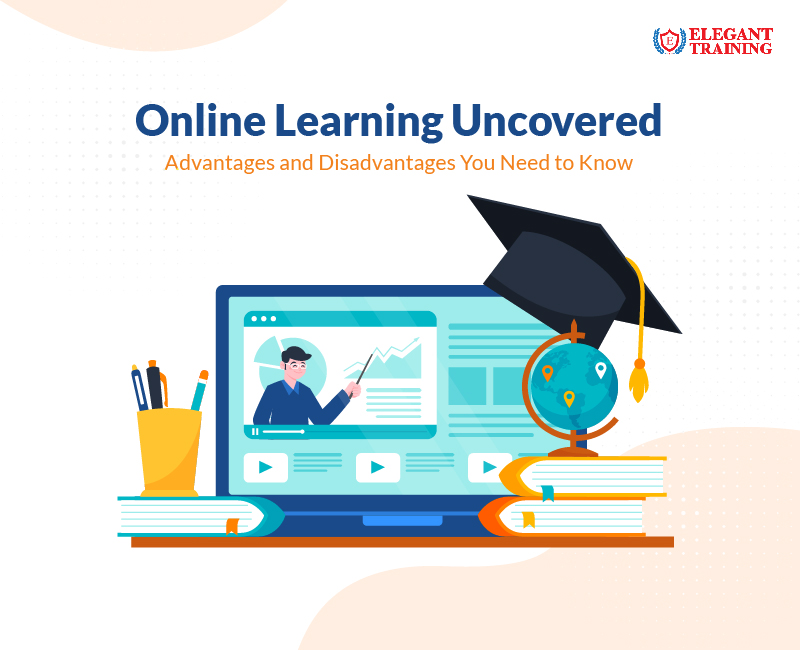Online Learning Uncovered: Advantages and Disadvantages You Need to Know
In the 90s, we enjoyed attending school to study our lessons in a traditional classroom setting. Students could sit together, learn every class in a group, and have fun going to the playground, creating cherished memories.
However, the pandemic changed everything, and the educational sector had to transform into an online learning environment. All teaching platforms started offering online classes to continue educating students worldwide.
The demand for online learning has increased and will continue to do so. Despite this, there are both advantage and disadvantage of online learning. For students, parents, and employers to make informed decisions, they must know the pros and cons of online learning. While online learning has advantages, such as learning from anywhere, it also has drawbacks.
This article will discuss both online learning advantages and disadvantages.
5 Advantages of Online Learning

Convenience: Student convenience is one of the main advantages of online learning. With an internet connection, students can access their courses and materials from anywhere, anytime. This flexibility allows students to balance their schedules and match their lessons to their own pace and timing, resulting in better outcomes. Additionally, online learning enables effective communication between students and their tutors and peers.
Efficiency: Another advantage of online learning is its efficiency. Students can customize their learning experience by deciding when and where they want to study. Online learning provides video lectures, quizzes, and one-to-one interactions to help students improve their learning process. The primary benefit of efficiency is that students can pause and rewatch the study materials as many times as needed, which allows them to have an effective learning experience.
Affordable: An important benefits of online learning is that it is cheap. Traditional education costs significantly more than online learning. This is because it involves a lot of manual work and additional expenses, such as hiring teachers, purchasing school supplies, and buying books. Online learning, on the other hand, does not have such fees associated with it. It can be done from home or office without extra costs. They can complete their work when they are most productive and focus on other significant aspects of life, such as career goals or family responsibilities. It reduces stress levels for students and parents, as they can easily manage their schedules without dealing with long waiting lists or the hassle of commuting to college or university classes.
Variety of learning styles: Online learning systems offer a variety of learning styles to suit individual preferences. These systems provide various resources, such as video tutorials, written materials, and discussion boards, enabling students to choose the most appropriate method to suit their learning style. Whether students prefer to learn through video lectures or reading and writing, the system caters to their needs.
Individual attention: A benefit of online learning is personalized attention in a supportive environment. One-on-one sessions provide tailored support for personal needs, helping students to understand challenging concepts and reinforce their learning. As a result of the flexibility of online learning, students can structure their schedules to take advantage of these personalized interactions to the fullest extent possible. Small group discussions encourage collaborative learning and the exchange of diverse perspectives. Moreover, students benefit from immediate feedback, a wide range of multimedia resources, and recorded lectures, collectively contributing to a comprehensive and personalized learning experience.
5 Disadvantage of Online Learning

Technology issues: The main disadvantage of online learning is technology issues. Students need a proper internet connection, a computer, or a smartphone to participate effectively. Unfortunately, not all students have access to these resources, which can disrupt their learning experience. These disruptions can negatively impact their studies. Compatibility issues may arise when learners in different locations use devices with other operating systems. If students live in a rural area, they cannot access the Internet, which prevents them from taking online classes properly. Thus, better technology is needed to overcome these issues, but unfortunately, not all students can afford it.
Absence of face-to-face interaction: Due to its flexibility and accessibility, online learning has recently gained immense popularity. However, it also comes with certain challenges, particularly regarding face-to-face interaction. Traditional learning methods rely on immediate, real-time discussions between instructors and peers. In a physical classroom, students can ask questions and engage in dynamic exchanges, which fosters a rich learning environment that promotes active participation and deeper comprehension. Group activities are also an essential component of traditional education, which enables students to collaborate, share ideas, and work together to solve problems. Suppose you are taking an online course that does not allow you to develop your understanding and problem-solving skills through personal interaction. The practice of instant feedback can be accomplished through traditional learning, but online learning does not offer any of these features.
More screen time: If you’re an online learner, you must consider how excessive screen time affects your mental and physical health. Refrain from letting the convenience of virtual learning come at the cost of your health. Students prefer to take online courses on tablets, computers, or smartphones. It is also common for students to be glued to their screens to write notes, read and perform other tasks, which can lead to negative consequences. Prioritize self-care and give your mind and body the breaks they deserve. Eye strain and discomfort can happen when you stare at a screen for too long. It can also result in a decrease in attention span and increased stress levels. Regulating screen time while continuing online learning is essential to mitigate these issues.
Lack of social interaction: Online learning has a significant disadvantage because it needs more social interaction than traditional education. Unlike in-person learning, online learners cannot easily engage with their tutors and peers, build meaningful relationships, and actively participate in extracurricular activities. This can hinder personal growth and networking opportunities because students may need help to create the same depth of relationships and connections as they would in face-to-face learning. Moreover, they may miss out on physical gatherings and extracurricular events, crucial for developing interests, leadership skills, and a valuable network. Therefore, while online learning offers flexibility and accessibility, it needs to address these limitations to provide a comprehensive educational experience that is socially enriching and well-rounded.
Isolation: Online learning has many benefits but can lead to student isolation. Since there is no physical interaction, students may feel disconnected from their peers and instructors, resulting in loneliness and disengagement. In-person interactions are essential in education, not just for sharing knowledge but also for emotional and psychological benefits. Students in a traditional classroom gain social skills, a sense of belonging, and emotional support, which are all important for their academic and personal growth. The absence of these crucial interpersonal connections in online learning underlines the need to find ways to address and mitigate the potential feelings of isolation that can arise in virtual educational environments.
So which one do you prefer?
When it comes to online learning, there are both advantages and disadvantages, and it’s important to make a thoughtful decision. With technological advancements, online education has become increasingly popular and offers a comprehensive learning experience. Engaging in hands-on practice and taking advantage of its flexibility is essential to maximize online learning. However, a more traditional approach may be the best choice if you prefer face-to-face interaction, hands-on learning, and social interaction.
Choosing the right learning method depends on your needs.


